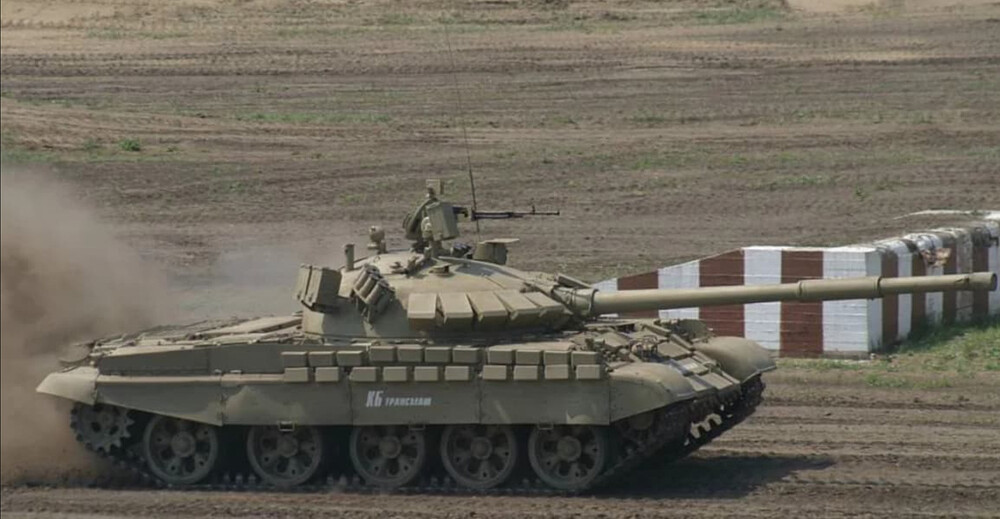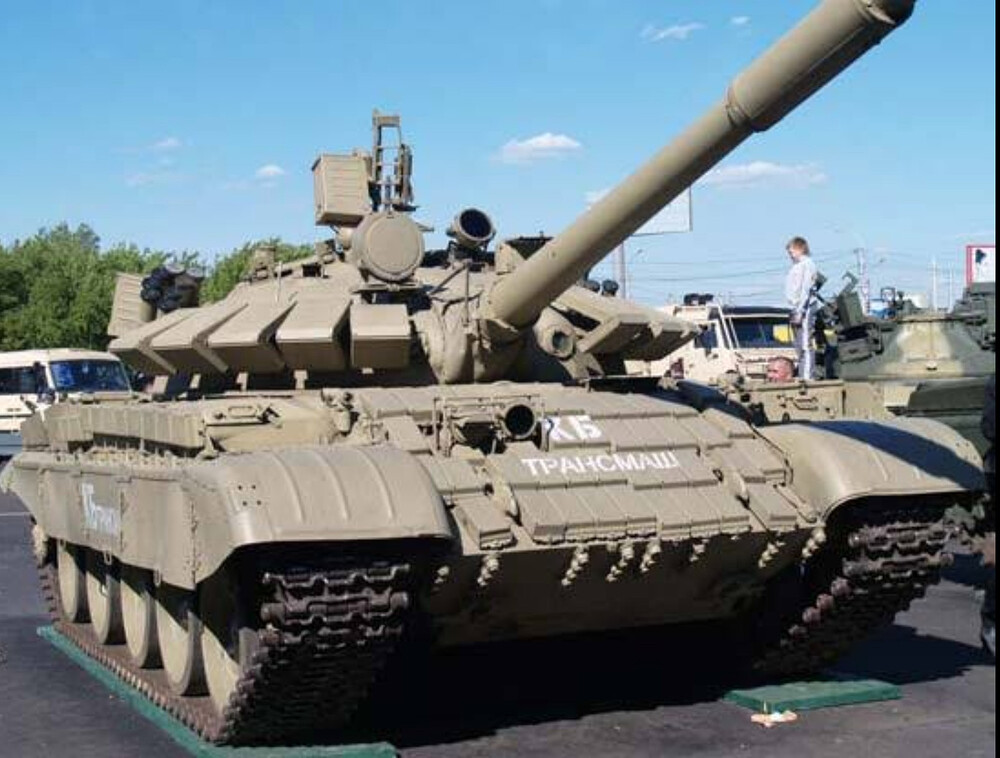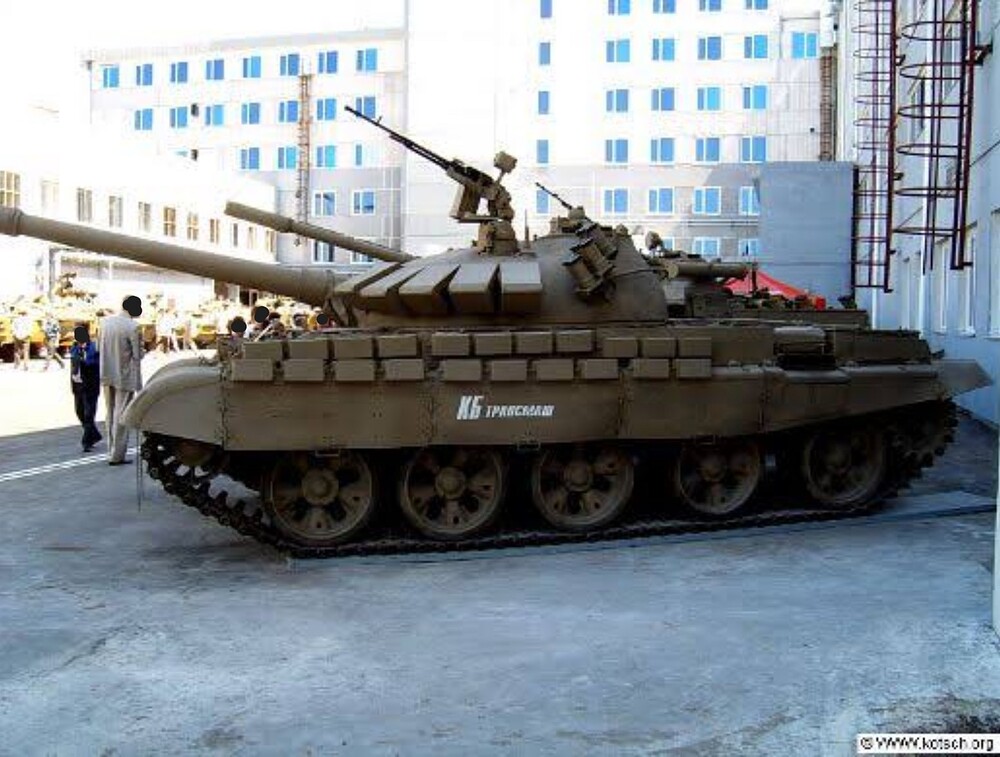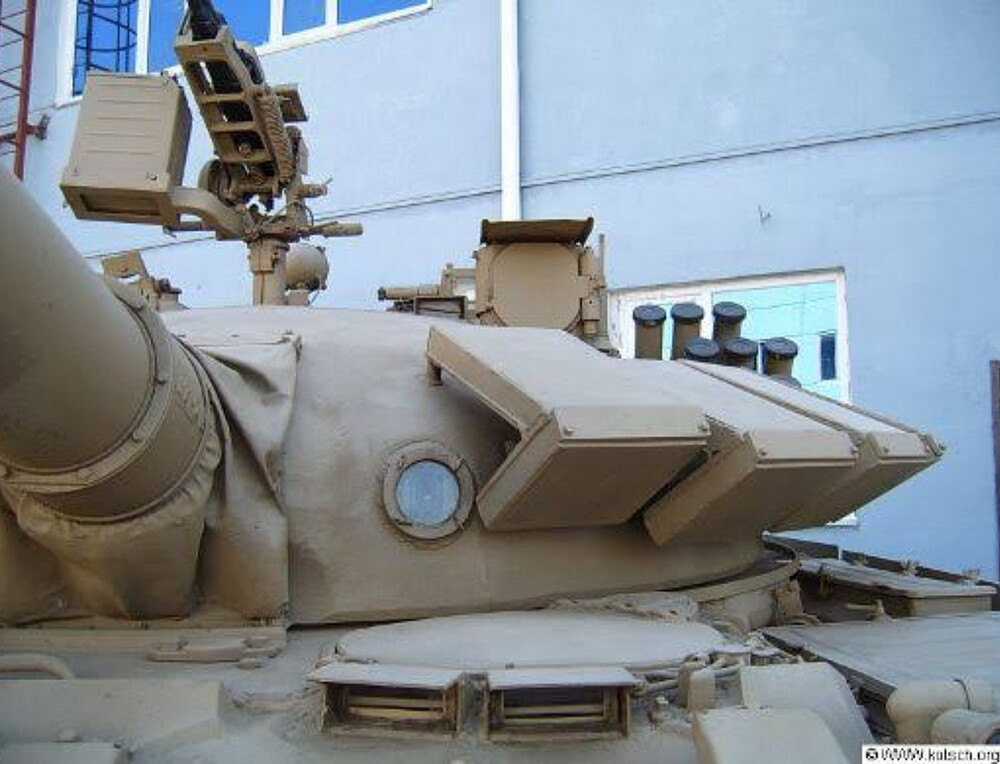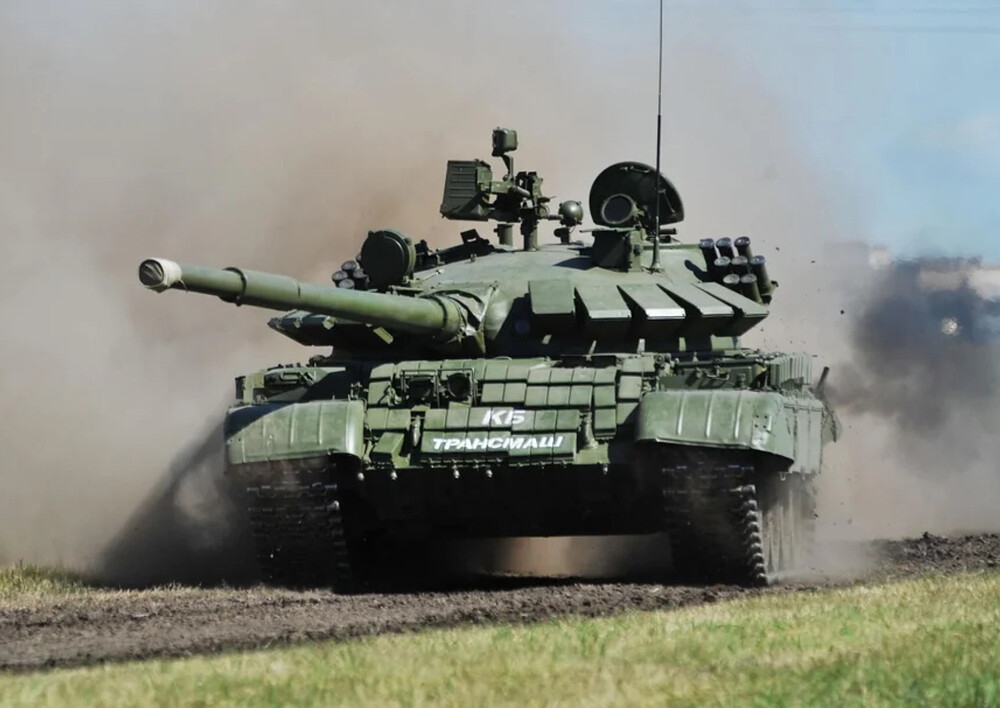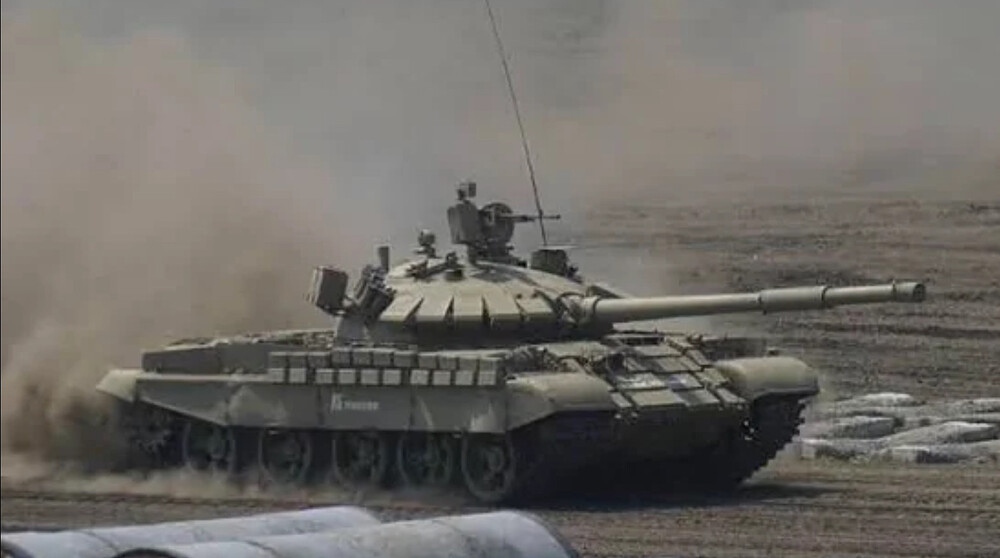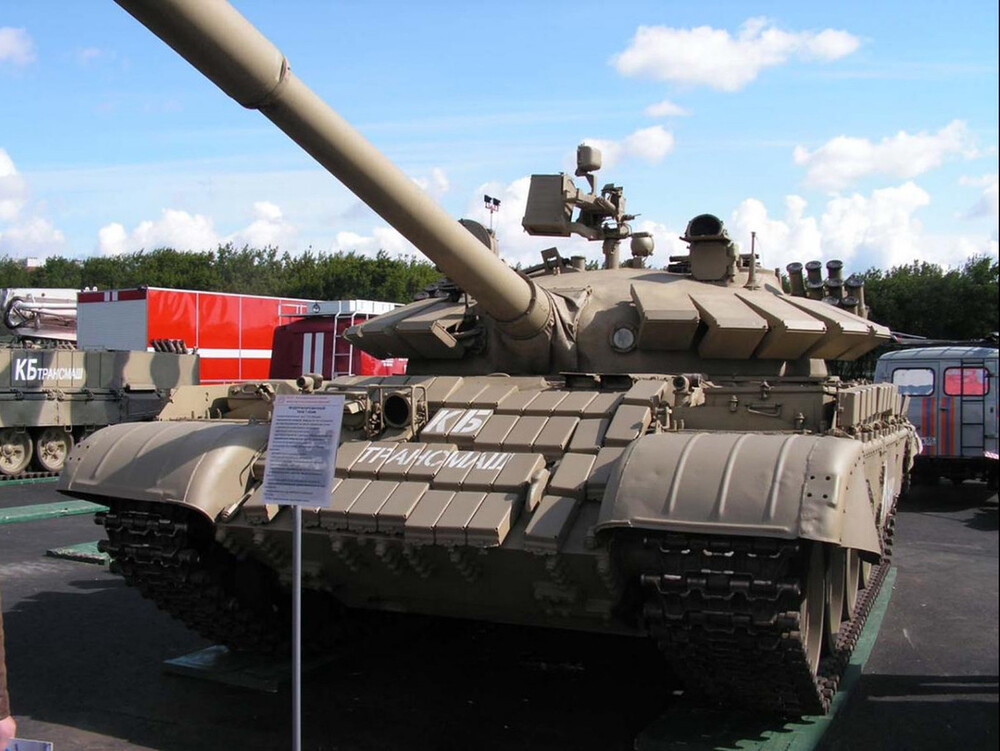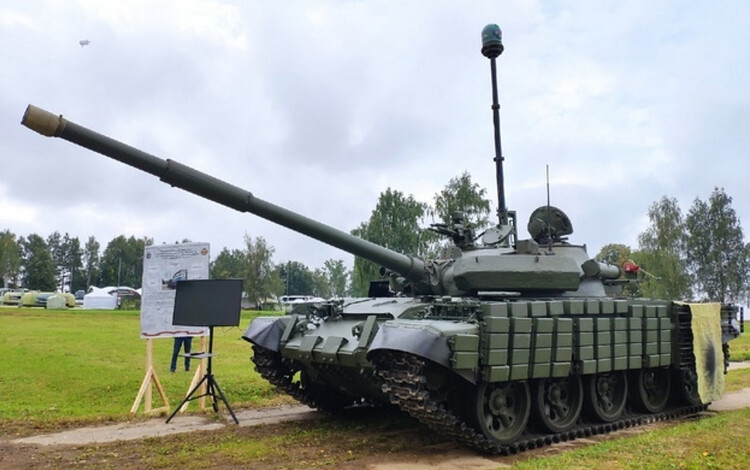Would you like to see this T-62 in-game?
- Yes as a Tech-Tree Vehicle
- Yes as a Premium Vehicle
- Yes as a Squadron Vehicle
- Yes as an Event Vehicle
- No, I do not want to see this T-62 in-game.
T-62M Obr. 2005
Introduction
The T-62M Obr. 2005 was a late-stage modernization of the classic Soviet T-62 main battle tank, developed by the Omsk Transport Engineering Design Bureau in the early 2000s. It was intended to drastically extend the service life of the T-62 platform by integrating modern systems and enhancing firepower, armor, and mobility. The tank retained its original layout and 115 mm gun but incorporated a series of upgrades aimed at bringing it closer in capability to more contemporary armored vehicles. Despite being a technically impressive proposal, the T-62M Obr. 2005 remained a prototype and was not adopted for service by Russia or exported.
History
Spoiler
The T-62 made its debut in the early 1960s as the Soviet Union’s first tank to mount a smoothbore main gun, the 115 mm U-5TS. This marked a shift in Soviet tank doctrine, prioritizing higher muzzle velocity and better armor penetration at range, particularly in anticipation of Western armor developments. The T-62 was not designed as a complete departure from the T-55, but rather as an evolutionary step, offering improved firepower while retaining much of the mechanical layout and simplicity of its predecessor. It featured a newly designed turret and a slightly stretched hull but still lacked some of the more advanced armor and fire control systems that would become common in later generations.
Over time, as threats on the battlefield evolved, especially with the proliferation of shaped-charge munitions and high-velocity kinetic rounds, the T-62’s base protection and targeting capabilities began to fall behind. To address this, Soviet engineers developed a series of upgrades in the 1980s aimed at extending the T-62’s service life. The most prominent among these were the T-62M and T-62MV, both focused on improving survivability, fire control, and overall battlefield performance.
The T-62M introduced composite applique armor on both the hull and turret. This included layered steel and rubber plates added to the turret cheeks and glacis, “Brezhnev’s Eyebrows.” This passive armor upgrade increased resistance to older kinetic and chemical energy threats, with estimated frontal protection reaching 300–350 mm RHAe against APFSDS and 400–450 mm against HEAT, depending on impact angle.
The
T-62MV, a separate modernization path, replaced the composite armor modules with
Kontakt-1 explosive reactive armor. ERA blocks were installed across the turret, hull front, and sides. While this upgrade greatly improved protection against single-charge HEAT warheads, boosting effective resistance to around
600 mm RHAe in covered areas, it offered virtually no added defense against kinetic rounds like APFSDS. As a result, the MV variant was particularly suited for environments dominated by anti-tank missiles and RPG threats, while the M variant offered slightly better resilience against conventional tank shells.
Both versions benefited from improved fire control systems, notably the integration of the KTD-1 or KTD-2 laser rangefinder mounted above the main gun, and the Volna fire control suite, which provided a significant improvement in engagement accuracy over the earlier optical-only systems. Some T-62M and MV tanks were also equipped to fire laser-guided missile directly from the main gun, giving them a powerful standoff anti-armor capability out to ranges of over 4 kilometers.
To support the added weight, both upgrades received the V-55U diesel engine, producing 620 horsepower, a modest improvement over the original powerplant. This helped preserve on-road speed and kept the tank’s mobility in line with its original performance, though it still lagged behind newer Soviet designs in agility. Additional upgrades included improved communications, a fire suppression system, and enhanced NBC protection.
T-62M Obr. 2005
By the early 2000s, in an attempt to radically modernize the platform further, the T-62M Obr. 2005 prototype was developed. This tank is based on an early T-62 chassis, rather than a T-62M. This version incorporated several high-end features, including a V-46-5M engine producing 690 hp, Kontakt-5 ERA and a new fire control system with laser-guided missile capability (not previously equipped on T-62M tanks). Most notably, it was the only known T-62 variant fitted with Kontakt-5 ERA, mounted on the turret front in a configuration similar to that used on the T-72B. Unlike Kontakt-1, Kontakt-5 could offer some protection against kinetic penetrators. However, its hull retained older armor and Kontakt-1 tiles, meaning its overall survivability was still limited by it. Despite the ambitious upgrades, the T-62M Obr. 2005 remained a prototype and did not enter mass production or service.
Firepower and Fire Control
Spoiler
A truly unique upgrade was the addition of a multi-channel 1K13D-22 sight. It was a day optics with passive low-light capability and a laser rangefinder integrated into the same unit. While thermal imaging was not included, the sight system allowed for accurate long-range target tracking and guidance of the Sheksna missile. Combined with the addition of a digital ballistic computer, the T-62M Obr. 2005 achieved far greater first-shot accuracy and quicker target acquisition than any previous T-62 model. What makes this fire-control system unique is that, unlike the more modern thermal optics fitted to T-62 tanks, which prevent missile use, this 1K13D-22 sight does not have that limitation.
The upgraded fire control system marked one of the most significant improvements in the Obr. 2005 package. By integrating laser-guided missile capability, improved optics, and modern range finding and ballistic computing, the system brought the T-62’s gunnery performance up to the level of modern main battle tanks. In fact, this was likely the most capable fire control system ever fitted to a T-62 platform, offering a level of accuracy and versatility far beyond what the original design ever intended to achieve.
Firepower on the T-62M Obr. 2005 remained centered around the 115 mm U-5TS smoothbore gun. The tank was equipped to fire the 1K116-2 “Sheksna” laser-guided missile directly through the gun barrel, allowing it to target enemy armor with high precision at distances of up to 4,000–5,000 meters. These missiles were capable of defeating advanced armored threats, including tanks equipped with ERA, thanks to their tandem-charge warhead design.
By 2005, the most advanced armor-piercing round developed for the Soviet 115 mm U-5TS smoothbore gun was the 3BM-28 APFSDS. This round represented the final stage in the evolution of kinetic energy ammunition for the T-62’s main gun, incorporating a high-density depleted uranium alloy penetrator to improve performance against armored targets. With a muzzle velocity of around 1,650 m/s and an estimated penetration capability of approximately 350 to 385 mm of rolled homogeneous armor (RHA) at 2,000 meters. While it provided respectable performance against legacy armor or side profiles of more modern vehicles, its effectiveness was increasingly limited against contemporary main battle tanks equipped with composite or reactive armor. Nonetheless, it remained the most capable 115 mm kinetic round available at the time and offered a meaningful upgrade to any platform still using the U-5TS gun.
The tank retained its standard secondary armament, consisting of a 7.62 mm coaxial PKT machine gun, however received a new 12.7 mm NSV heavy machine gun mounted on the turret roof for anti-air and anti-personnel defense. How the crew was supposed to operate the roof-mounted machine gun is unclear, as it does not appear to be automated or controllable from inside the tank. The most likely explanation is that it was installed primarily for show.
Protection
Spoiler
In terms of protection, the T-62M Obr. 2005 saw its most significant upgrades in armor. The turret face was fitted with Kontakt-5 explosive reactive armor, arranged in a similar fashion as on the T-72B (1989). Kontakt-5 is known to provide approximately 200–250 mm of additional protection against kinetic energy penetrators (APFSDS) and up to 600–800 mm against shaped charges, depending on impact conditions. This gave the turret of the T-62M Obr. 2005 considerably improved survivability compared to earlier T-62 variants, especially in frontal engagements. However, the actual surface area covered by Kontakt-5 is relatively limited, noticeably less extensive than the Kontakt-1 layout seen on the T-62MV. This left large portions of the turret (especially the roof) exposed. This may have been a trade-off between protection and cost.
The hull received Kontakt-1 ERA applied to the glacis, but again, cost-saving measures appear evident in the design. Only a small section of the hull sides was covered with Kontakt-1, far less than the widespread side coverage seen on the T-62MV. Instead, the vehicle relied on basic rubber side skirts for lateral protection. This suggests that designers may have deliberately reduced ERA coverage in less critical areas to avoid driving up production and export costs. While this approach preserved frontal protection, it left the tank more vulnerable to side attacks, particularly from handheld anti-tank weapons or flanking fire.
The T-62M Obr. 2005 also received
T-72B’s smoke grenade launcher system on the turret and featured a new
automatic fire suppression system, providing the crew with basic active protection measures. It is likely that spall liners were incorporated into the T-62M Obr. 2005, following the precedent set by the
T-55M5 several years earlier, where they were introduced to enhance crew survivability against internal fragmentation. Overall, the addition of Kontakt-5 on the turret and selective Kontakt-1 on the hull improved its protection, though with clear compromises to keep the upgrade affordable.
Mobility
Spoiler
Mobility was significantly enhanced through the integration of a V-46-5M diesel engine, producing 690 horsepower, a considerable improvement over the original T-62’s 580 hp V-55 engine. Despite the added weight from new armor systems, including ~86 Kontakt-1 ERA bricks, 20 larger Kontakt-5 turret modules, smoke launchers and rubber side skirts, the total increase in mass amounted to only around 0.91 tons (my calculations may be wrong). When added to the base T-62’s weight of 36 tons, the vehicle’s combat weight reached approximately 37.9 tons. Thanks to the more powerful engine, the upgraded tank achieved a power-to-weight ratio of roughly 18.2 hp/ton, a notable leap over the original configuration (my calculations may be wrong). This translated into improved responsiveness and acceleration. The precise gains in top speed remain uncertain. The basic torsion bar suspension and drivetrain layout remained unchanged, select mechanical components were reportedly adapted from the T-72 series, likely to enhance long-term serviceability.
Conclusion
Spoiler
Although it never entered mass production, the T-62M Obr. 2005 stands as perhaps the most advanced iteration of the T-62 ever developed by Russia. It brought together an array of meaningful upgrades, most notably the potential ability to use 3BM-28 APFSDS round, with a significantly improved fire control system featuring digital computation and precision optics. With the installation of Kontakt-5 ERA on the turret, it achieved the highest level of frontal turret protection ever seen on a T-62 (prior to 2022+ upgrades), capable of defeating modern HEAT threats and offering some resistance to kinetic penetrators. These enhancements were complemented by likely internal additions such as spall liners, improved communications, and a new automatic fire suppression system, further raising the platform’s survivability.
Ultimately, the T-62M Obr. 2005 was never adopted, likely because it offered few meaningful advantages over the already widely deployed T-72B, which featured superior armor, firepower, and growth potential. At the same time, older T-62M and T-62MV models remained readily available in large numbers and could be returned to service quickly and cheaply, making them more attractive to export clients and reserve forces. In recent years, T-62s have been used primarily in a fire-support role rather than for direct tank-on-tank engagements, diminishing the tactical value of high-end ammunition, armor upgrades or cutting-edge fire control. Nevertheless, the engine used in this tank is now fitted to upgraded T-62Ms and MVs, meaning the development was not entirely wasted.
T-62M Obr. 2005 – Full Specifications
Spoiler
General
- Type: Modernized Medium Tank
- Origin: Russia (Omsktransmash upgrade)
- Base Model: T-62
- Year Unveiled: ~2005 (prototype)
- Crew: 4 (Commander, Gunner, Loader, Driver)
- Combat Weight: ~37.9 t (with ERA and skirts)
Dimensions (Estimated, same as base T-62M)
- Length (gun forward): ~9.34 m
- Hull Length: 6.63 m
- Width: 3.30 m
- Height: ~2.40 m
- Ground Clearance: ~0.43 m
Armament
Main Gun:
- Type: 115 mm U-5TS (2A20) smoothbore gun
- Ammunition Types: APFSDS, HEAT, HE-Frag, 9M117M “Sheksna” laser-guided ATGM
- Guided Missile Capability: Yes (firing through barrel)
- Missile Effective Range: Up to 4,000–5,000 m
- Rate of Fire: ~6–8 rounds/min
Ammunition Load:
- Total rounds carried: ~40 (estimated with ATGMs included)
- Missiles carried: ~4–6 Sheksna ATGMs (typical)
Secondary Armament:
- Coaxial MG: 7.62 mm PKT
- Roof MG: 12.7 mm NSV heavy machine gun
- Smoke Dischargers: Yes, 8-barrel system per turret side
Fire Control & Optics
- Gunner Sight: 1K13D-22 multi-channel day/low-light optic
- Laser Rangefinder: Yes (integrated)
- Ballistic Computer: Yes, digital
- Missile Guidance: Laser beam-riding
- Thermal Imaging: Not installed
- Night Vision: Passive, low-light capable optics
Protection
- Frontal Turret ERA: Kontakt-5 ERA
- Adds ~200–250 mm vs APFSDS, ~600–800 mm vs HEAT
- Frontal Hull ERA: Kontakt-1 ERA
- Side ERA: Kontakt-1 (limited coverage)
- Side Skirts: Basic rubber skirts
- Base Armor (estimates):
- Hull front: ~100–120 mm steel (before ERA)
- Turret front: ~242 mm cast steel (before ERA)
- Spall Liners: Likely included (based on T-55M5 precedent)
- NBC Protection: Yes
- Fire Suppression: Upgraded automatic fire extinguishing system
Mobility
- Engine: V-46-5M V12 diesel engine
- Power Output: 690 hp
- Transmission: Manual, 5 forward / 1 reverse gear
- Power-to-Weight Ratio: ~18.2 hp/ton
- Top Speed (estimated): ~50 km/h (road)
- Range (road): ~450–500 km
- Fuel Capacity: ~960 liters internal + optional external drums
- Suspension: Torsion bar
- Ground Pressure: ~0.85 kg/cm²
Additional Features
- Communications: Updated radios (unspecified model)
- Snorkel: Capable of deep fording with preparation
- Camouflage: Typically shown in green or export desert schemes
- Status: Prototype only, not adopted or exported
Sources
Spoiler
Т-62: Про танк, которого нет на вооружении Российской армии - ТЕХНОСФЕРА Россия
https://www.reddit.com/r/TankPorn/comments/1cpgwjy/t62m_obr_2005t62m_with_kontakt5_and_new_engine/
https://www.reddit.com/r/TankPorn/comments/13o2kke/i_dont_know_the_name_of_this_t62_variant_so_i/
Т-62М обр. 2005 г.: Т-62 мутировал - Передано разработчикам - War Thunder — официальный форум
T-62M tanks: how the armor of these vehicles works
T-62M
Tankograd: Kontakt-1
Below The Turret Ring: Explosive Reactive Armor - some history, some types
Tankograd: T-62
Comprehensive Soviet/Russian vehicle collection
